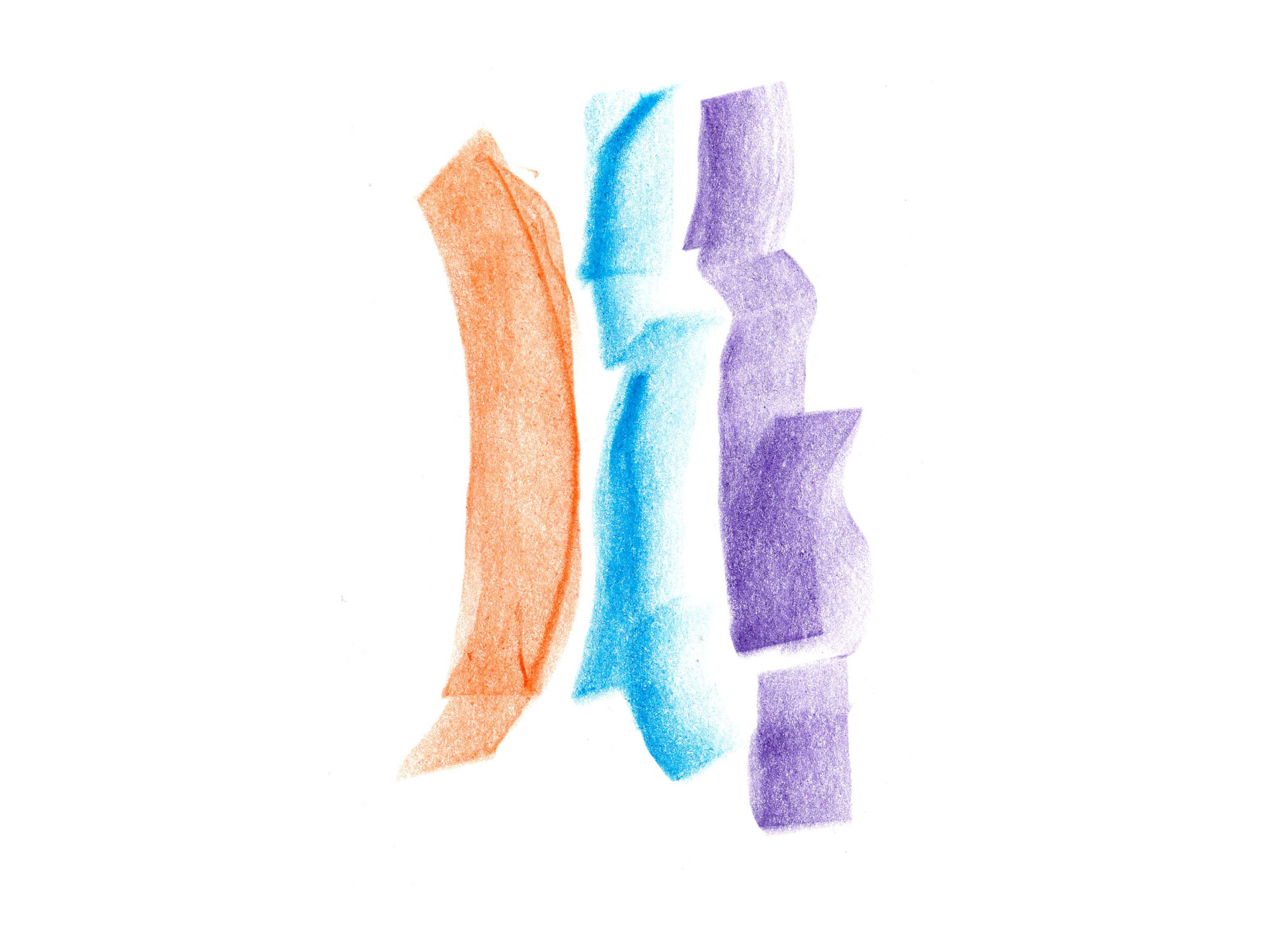The method of dialogical management not only helps companies to reach decisions in joint responsibility – it is suitable as an instrument for any relationship process. Insights into this social-artistic path from a management consultant and organisational developer.
A few years ago, a large industrial company wrote in its employee Christmas message that their actions had so far been focused on excellent engineering work, but that in the future, focus on the social side of the company would also be necessary in order to maintain their excellent work. Thus, this company, in addition to the factual-professional focus, discovered and recognized the relationship aspect in regard to cooperation as a success factor.
The social aspect is in play whenever people have to deal with each other, communicate, exchange, or regulate something. Our behaviour is reflected in the state and quality of our social conditions. Currently, we are experiencing dramatic dissonance almost everywhere we look. Ecological crisis, uncertain legal relations and wars, the widening gap between rich and poor, refugees in dire need, the so-called financial crisis, and much more. Our thinking does not sufficiently encompass the conditions at play, and the social instruments developed so far are not effective enough.1 Rudolf Steiner speaks of a lack of capability for social thinking as early as 1922.2 And indeed, the threatening lack of insight, coherence, and alertness is often exasperating. But thank God there is also good news.
Two Trends
We live in a collaborative world. Living and working together are inevitable. This world community is not a static, cemented social structure, but is in lively development. Nowadays, two megatrends are considered to be absolutely decisive. On the one hand, there is individualisation. We humans are becoming more and more peculiar, willful, and obstinate, becoming more and more sensitive to injustice and other people’s influence, with a growing longing to participate in meaningful things and to leave a positive mark on the world. On the other hand, there is globalisation. Intercultural competence is required in order to be able to positively face what is initially unfamiliar to us. These two trends point to a social organizational task. We are invited to actively shape the social aspect at all levels of social life. We can change our behaviour and thus the circumstances.
It is a social mystery that every individual social judgement is false.
Each and every one of us have key experiences in our biography that stay with us for the rest of our lives. I encountered one of these key sentences when I was still a student, given by Rudolf Steiner in the so-called Oxford lectures: «It is, I would like to say, a social mystery, ladies and gentlemen, that every individual social judgment is false!»3 Even though Steiner derives this sentence from a train of thought at the level of society as a whole, in my opinion, this sentence is fully justifiably transferable to each aspect of social life and thus of far-reaching relevance.
Everything created by humans emerges from decisions, and these in turn come from conversations. Therefore, communication is rightly one of the most powerful instruments we use. The quality of communication processes is reflected in the state of our world. So it is always worthwhile to direct our attention to this instrument anew, even in the sense of the question: How do good and healthy decisions that make the world seem a little better, truer and more beautiful, come about?
In the Working World
Entrepreneurs, managers, and employees really want commitment, flexibility, innovation and a strong and stable culture of responsibility. In fact, this was so long before terms like agility, self-organization,4 cooperative leadership, scrum, reinventing organizations5 and so on developed their magical attraction. Even then, employees are often not quite ready, the questions are too complex, the culture of learning is not sufficiently developed and the processes simply take too long. Many are familiar with extremely long agendas, where you are already fully aware that ‹we’ll never get through this› when you send out the invitation to the next meeting. Thus come tiring ping-pong discussions and contributions that just seem like someone’s trying to shine or indicate competence rather than really help lead the problem towards a solution. But we also experience encounters and consultation processes that are unexpectedly vitalising, where people listen to each other and take each other seriously -where one contribution builds mindfully on the other and a good result falls like a ripe apple from the tree. And then you ask yourself: Why is this not possible more often?
Idea, Attitude, Technique
Dialogical management initially adheres to the concept that ‹thinking together is usually more successful than thinking alone›. The context we want to influence with the decision we’re searching for is usually considerably complex. Many different perspectives need to be considered in order to find appropriate and contextual answers to the questions posed. Recognizing this fact and actively seeking a dialogue-based consultation process is an essential prerequisite for sustainable corporate success.
37 degrees Celsius is a good temperature for human beings to work in – not too cool and not too fervent.
Dialogical management as an attitude means turning affected parties into participants. Today, change management has become a natural, continuous process of corporate development. With the attitude addressed here, on the one hand, we can use the existing knowledge in the organization, while on the other hand, we enable commitment and reduce the inevitable resistance to change. It includes the individual and creates a good basis of trust. This promotes a feeling of personal involvement with the consultation results and makes people and companies more successful.
Dialogical management, however, also refers to a social technique of collaborative work and joint decision-making, which increasingly enables participants to act from their own insight and on their own responsibility. As part of a living corporate culture, the four steps of dialogical management make it possible to achieve clear and coherent decisions that are then consistently implemented. It is worthwhile to firmly anchor these dialogical management techniques in corporate culture. Often the most effective things come across as less than dazzling, and perhaps not very suitable for scoring points with buzzwords or tools and presenting oneself as ‹on the cutting edge›. But they are effective, enduring, and plausible to common sense.
A dialogical process of judgment formation or consultation is a living process comparable to plant growth. If we ask ourselves what a plant needs to be able to develop healthily and thrive, the four ancient Greek elements of warmth, light, water, and earth come to mind.
Encounter – Warmth

It can happen that we are in a room with other people and yet no encounter takes place. For even attention, whether towards another person or a thing, is an act of will that generates warmth. We feel most alive when we are in resonance and create vibrations with one another6. Like two tuning forks, when one resonates, the other resonates along with it. The opposite of resonance is not being involved. But that is what this first principle is about: making sure that everyone is present and engaged. Only those who really want to can participate in the process of forming a judgment. The magic word here is interest, of which the literal, Latin translation is ‹being in between›. In this phase, spaces should open up for encounters with others and the cause for the meeting. We enter into a relationship. 37 degrees Celsius is a good temperature to work in for human beings – not too cool and not too fervent. This quality of warmth and presence is an absolute prerequisite for good consultation results and sustainable decisions. Good moderators use a lot of creativity and imagination in this first phase. Whether it is a checking-in round, a well-facilitated mindfulness exercise, or an inquiry about the individual relationship and perspective on the topic, in any case, it is essential that everyone should have their say. Driving or inhibiting forces should become visible and the mood should enable a good start.
The method of dialogical management not only helps companies to reach decisions in joint responsiblity – it is suitable as an instrument for any relationship process.
Information – Light
What information is available and necessary so that each and every person present can make a contribution? This phase is called ‹image formation›7 or ‹transparency›.8 Heidelberg 1998 Besides timely availability, good information is characterized by two qualities: Is the information complete, that is, are the meaning and the ‹why› also provided in addition to the ‹what›? If a piece of information is not comprehensive in this sense, the human psyche only has the option to speculatively add what is missing. Intensive discussions in the corridor or car park are clear indicators that this quality still needs to be worked on. According to the medical sociologist Aaron Antonovsky, the second quality of good information can be described as salutogenic.9. Is the information comprehensible, that means clear and free of contradictions, can this information be experienced as meaningful for my target group, and is it connected to their world of values and meaning – and is this information also manageable, is it apparent to the recipient as to what he/she should now do with this information? Too little light creates organisational fog and stimulates the rumor mill. Too much information, and information that is not focused on the target group, may relieve the informing person but is not understandable for the recipients because they are blinded by the abundance. As elsewhere, the right measure is also an art here.
Consultation – Water
In the actual consultation process or ‹judgement formation process›, hypotheses are formed, scenarios are developed, and as many options as possible are found. The first thing is to enlarge the cake rather than just exchange predetermined horizons in a flurry of opinions. Here, ideas are formed that are to become effective in life. If I conduct a dialogue, I do not want to spread views, but gain insights. This process is based on a collective cognitive process, real progress in knowledge. I am willing to think another person’s thoughts through to the end, seek a common view, and open up to the unfamiliar. It is not about sympathy, antipathy, and personal preference, but about the common search for something fitting, coherent, and appropriate. Perhaps the more innovative and unconventional a contribution is, the greater the danger of misunderstanding and the more important it is to look for and recognize interactions instead of just following linear causality. If this consultation process succeeds, something begins to give. The heaviness becomes alive and buoyant forces become active. A well-managed consultation process increases the problem-solving competence of an organisation. And with every sense of achievement, this path is easier to walk in the future. Nevertheless, a consultation process is not a ‹never-ending story›, as is often feared. Often, the jointly preferred option emerges on its own. If this is not the case, all conceivable options must be listed, criteria defined and opportunities, risks, and consequences identified. This clearly guided process is also helpful in order to be able to make an evaluation in retrospect. Did we think everything through, were our hypotheses realistic and is there a learning curve for future processes?
Decision – Earth
During moderation, the consultation process is separated from the decision. In the best case, all those who can and should make a contribution participate in the consultation process. Decision-making competencies, on the other hand, are often individualised and attributed to individual persons in positions of responsibility. Decision-makers have the responsibility to manage the consultation process carefully and to take into account the consultation results in a communicable way for their decision. During the consultation one remains in the realm of cognition, the decision leads to action. This brings the idea to earth. If the decision-makers do not follow the result of the consultation, there must be a good justification. In organizations with ‹collective leadership›, decision-making authority is also increasingly transferred to corresponding circles of responsibility.10
Outlook
Dialogical management is an idea, an attitude, and a social technique and shows itself as a modern and innovative form of judgment formation and decision-making. The more dialogical management finds its way into practice, the better and more socially sustainable the decisions become and the closer we come to the requirements for a learning organization. Dialogical management is not ‹good-weather management› to the effect of: ‹When we are doing well, we are also nice to each other›. For it proves to add value, especially in tense times. However, many have to resist their reflexes and ingrained patterns.
Good judgment processes take time. And there is a powerful force that whispers incessantly: ‹No time, no time, higher, faster, further›. The resulting constraints are a fact to be acknowledged. Nevertheless: How many well-intentioned initiatives and projects fail, lead to unintended results or peter out and leave behind not only often considerable costs but also a relevantly high level of demotivation?
It is like everything else: Dialogical management is a path of practice and a social art. We are all invited to become artists of social aspects.11 Certainly a strong and worthwhile program given the current state of the world.
See What Can Become
There is a flash in his blue eyes, a look that asks questions and looks forward to surprises. He has developed the program ‹Basic Values of Weleda› for Weleda, in which hundreds of people in positions of responsibility in the company have been learning for over ten years what potentization is, what chicory is all about, how to find the spirit of the center in sculpture and how to find oneself in meditation. For this purpose, he has established a network of friends of Weleda, previously in a joint effort with the doctor Jürgen Schürholz, who come together for further training courses from all corners of anthroposophical research and life. Uwe Urbschat sits in the circle during the seminars and courses, and when the employees’ gazes turn to him, they can see the fuel of all social aspects in his eyes: Recognition.
Wolfgang Held, Translator: Simone Stadlbacher
Footnotes
- Claus Otto Scharmer, Theory U – Leading From the Future. Carl-Auer, Heidelberg 2009.
- Rudolf Steiner, The Spiritual-Emotional Basic Forces of the Art of Education. GA 305, lecture from the 28th of August 1922, Rudolf-Steiner-Verlag, Dornach 1979.
- Rudolf Steiner, Basic Spiritual-Emotional Forces in the Art of Education. GA 305, lecture from the 28th of August 1922 Rudolf-Steiner-Verlag, Dornach 1979.
- Bernd Oestereich, Claudia Schröder, Agile Organizational Development. Franz Vahlen, München 2020.
- Frederic Laloux, Reinventing Organizations – A Guide to Creating Meaningful Forms of Cooperation. Franz Vahlen, München 2015.
- Hartmut Rosa, Resonance – A Sociology of World Relations. Suhrkamp, Berlin 2016.
- Bernhard Lievegoed, Social Design Using the Example of Curative Education Facilities, Info3, Frankfurt 1994.
- Karl-Martin Dietz, Dialog – The Art of Cooperation. Menon
- Michaela Glöckler, Eckhard Schiffer, Jürgen Schürholz, How Health Develops. Active Health, Anthroposophical Medicine, Landsberg 2007.
- Bernhard Oestereich, Claudia Schröder, The Collectively Managed Company – Ideas and Practices for the Agile Organization of Tomorrow. Franz Vahlen, München 2016.
- Volker Harlan, Rainer Rappmann, Peter Schata, Social Sculpture – Material on Joseph Beuys. Achberger Verlag, Achberg 1984.





